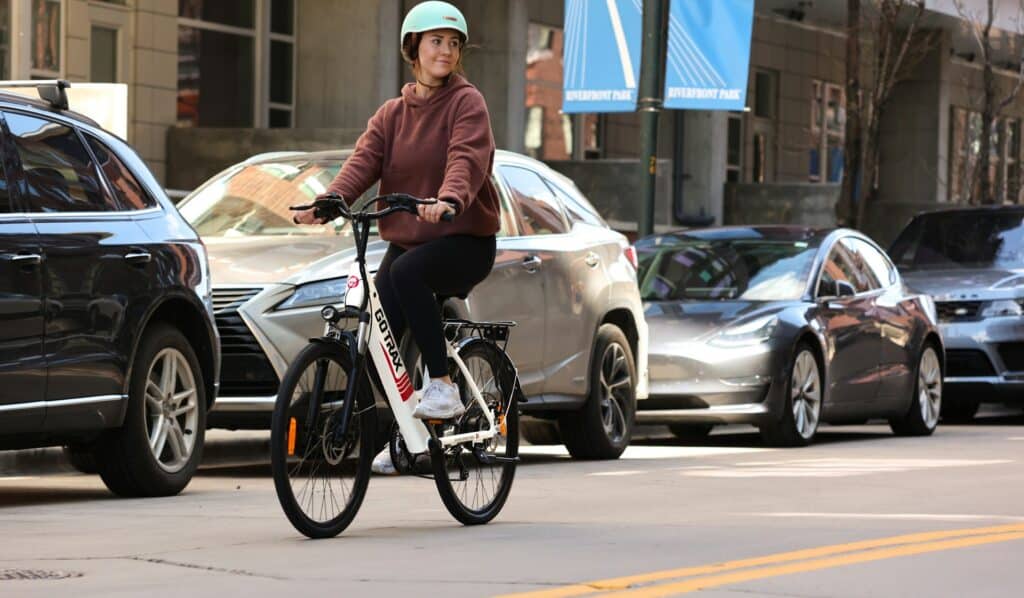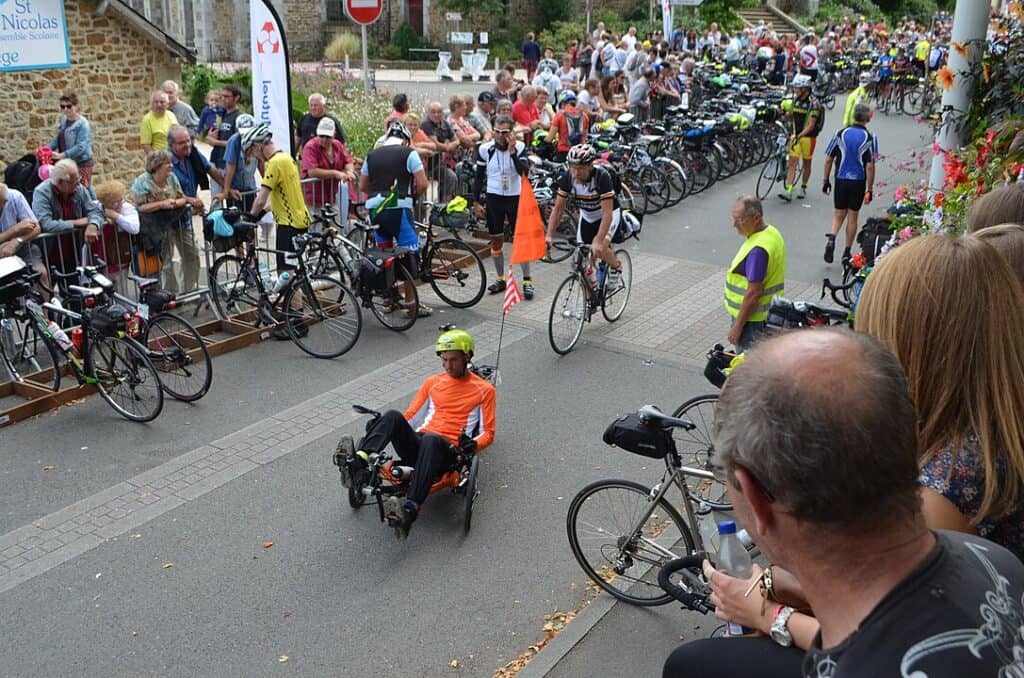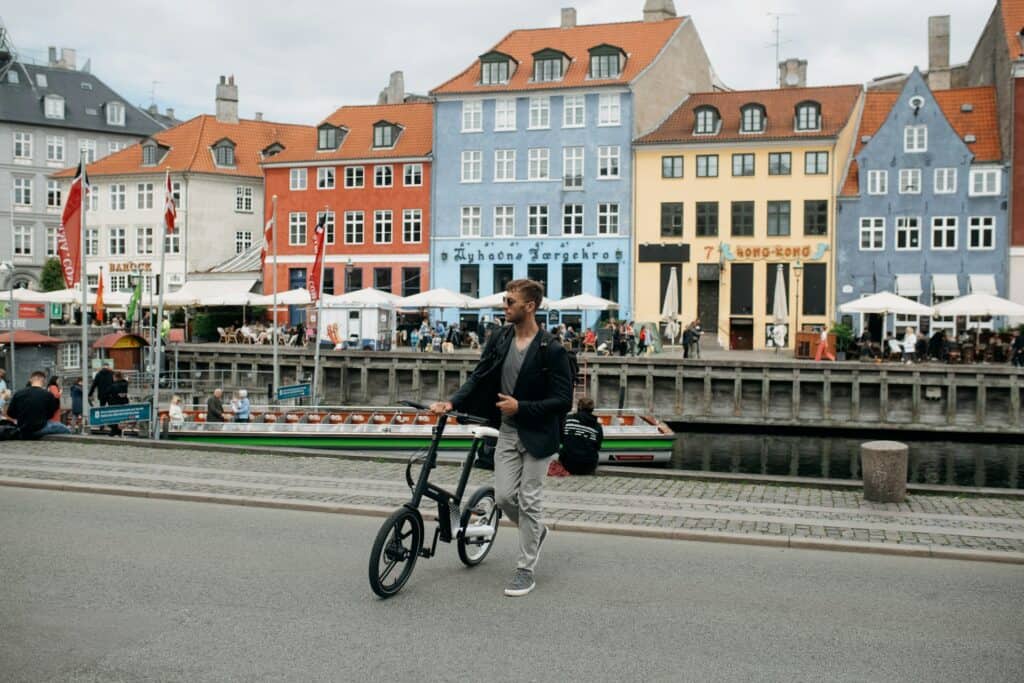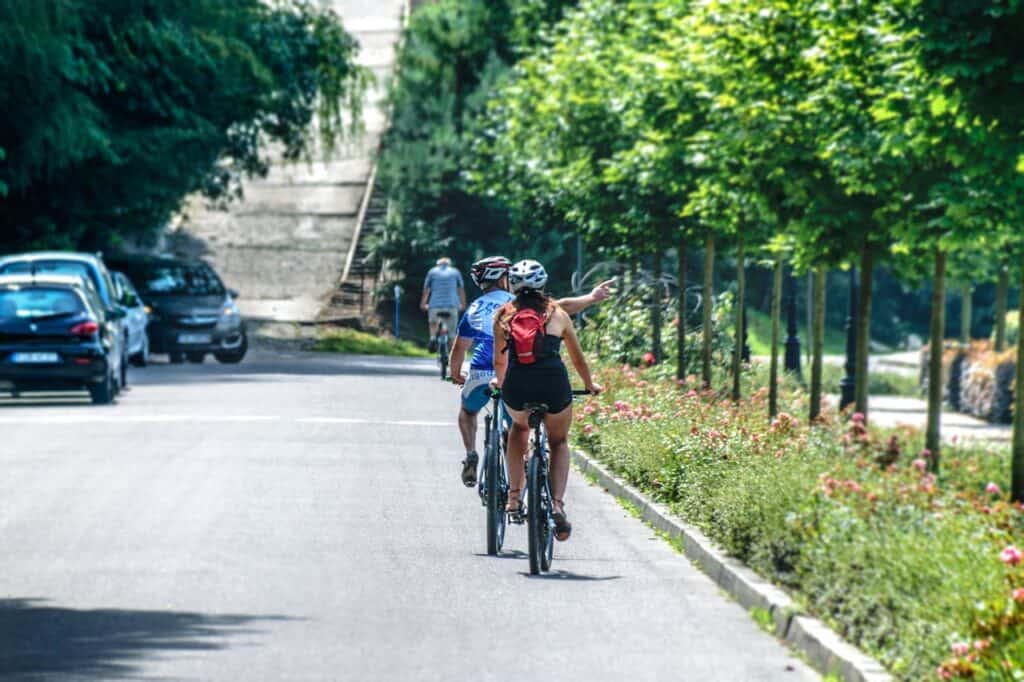We may earn money or products from the companies mentioned in this post. This means if you click on the link and purchase the item, I will receive a small commission at no extra cost to you ... you're just helping re-supply our family's travel fund.

City travel is getting a quiet revolution on two wheels.
E-bikes, once seen as a niche gadget, have become the secret weapon for travelers who want freedom without fatigue. They bridge the gap between staying local and covering serious ground. More travelers are learning that an electric motor can transform a trip from tiring to thrilling without losing the experience of being outside.
Across Europe, the United States, and beyond, tourists are swapping taxis and crowded buses for electric bikes that let them explore faster, farther, and with less effort.
The result is changing not only how people move but how they experience entire cities. Rental stations and bike share systems now populate most major urban destinations. It means travelers can pick up an e-bike at their hotel and drop it off near a museum or park without planning routes around return logistics.
A New Way to Explore

E-bikes fill a gap that used to define city travel.
Walking can feel too slow. Cars and taxis are expensive. Public transport is convenient but rarely personal. Each option comes with trade-offs that can limit how much you see or how much you spend. Many travelers end up choosing comfort over discovery or discovery over budget.
An e-bike hits the sweet spot. You move quickly but still stay connected to the street-level energy of a place.
That closeness to daily life is what makes them so appealing to travelers. You can stop at any corner, explore hidden streets, and follow spontaneous detours without worrying about burning out. It combines the best parts of active travel with practical reach that feels impossible on foot.
In destinations like Paris, Amsterdam, and Lisbon, e-bikes are now part of the rhythm of the city. They have become as common as tour buses once were. Rental shops and bike stations blend into the cityscape like cafés and convenience stores. Locals no longer see them as tourist gadgets but as practical tools for moving around efficiently and sustainably.
From Trend to Travel Essential

At first, e-bikes were treated as novelties. Rental companies offered them alongside regular bikes, expecting limited interest.
But travelers discovered something valuable. An e-bike lets you double your distance in a day without doubling your effort. Routes that once felt out of reach became realistic and enjoyable. The difference between finishing the day energized versus exhausted changed how people planned their trips.
Now, e-bikes are standard for guided tours and short city getaways.
They make hilltop viewpoints, coastal trails, and neighborhoods far from the center accessible to everyone. Tour operators report that groups stay together better and explore more confidently. Physical fitness stops being a barrier to participation, which means more people can join adventures they would have skipped before.
Families and groups love them because no one gets left behind. Children can keep pace with adults, and grandparents can join trips they might have avoided. The motor equalizes different energy levels and turns group travel into a shared experience instead of a struggle to stay together or wait for stragglers.
Redefining the City Break
E-bikes are changing how people think about a city break.
Instead of planning around subway maps or sightseeing buses, travelers can treat the whole city as open territory. The mental shift is significant. You stop worrying about how far something is and start asking if it looks interesting. That spontaneity turns rigid itineraries into fluid adventures shaped by curiosity rather than logistics.
In Barcelona, riders can start at the Sagrada Família and reach the beach in minutes.
In San Francisco, e-bikes flatten the city’s steep hills and make exploration feel effortless. Rome becomes manageable without battling traffic, and Copenhagen opens up beyond its compact center. Geography that once felt insurmountable becomes a series of enjoyable rides.
Cities once defined by traffic are being rediscovered at human speed, powered just enough to make the impossible easy. Travelers notice details they would miss from a car window. They smell bakeries, hear street musicians, and make eye contact with locals. The journey between attractions stops feeling like dead time and becomes part of the experience itself.
Environmental and Cultural Impact

E-bikes are not just convenient. They are part of a cultural shift toward cleaner, quieter, and more sustainable city exploration.
Compared with rental cars or taxis, they create almost no emissions and require minimal infrastructure. Cities benefit from reduced congestion and air pollution. Travelers feel better knowing their sightseeing leaves a lighter environmental footprint without sacrificing convenience or enjoyment.
In many European cities, tourists on e-bikes blend seamlessly with locals who commute on them daily.
That shared movement reshapes how people see a place. It feels slower, but richer, more human. You become part of the flow rather than an observer passing through. That shift changes how you connect with a city and the people who live there.
E-Bikes and the Rise of the Day Trip
Beyond city centers, e-bikes are transforming short-distance travel.
They are opening new possibilities for day trips and weekend adventures. Routes that required renting a car or booking transport now become doable on two wheels. This flexibility appeals to travelers who want options beyond crowded tourist centers without the hassle of driving or navigating unfamiliar roads.
From Florence to the Tuscan countryside or from Denver into the Rockies foothills, travelers are using e-bikes to reach spots that once required a car.
What used to be a long drive now becomes an active, scenic ride filled with freedom and discovery. Vineyards, hilltop villages, and coastal paths become accessible without the stress of parking or the isolation of sitting behind glass. The journey itself becomes memorable.
Local businesses are adapting quickly. Wineries, small cafés, and regional attractions are creating bike-friendly experiences for these new explorers. They offer secure parking, charging stations, and menus designed for active travelers. This shift benefits local economies while giving visitors more authentic experiences beyond standard tourist infrastructure.
Technology Makes It Simple
Modern e-bikes are easy to ride and surprisingly smart.
Adjustable pedal assist, built-in navigation, and long-lasting batteries take away the hard work while keeping the joy of cycling intact. Riders can choose how much assistance they want, dialing it up for hills and down for flat stretches. GPS helps with wayfinding so travelers can explore confidently without constantly checking maps.
New models can cover 50 to 100 miles on a single charge, removing most range anxiety.
Charging points are now common in hotels, cafés, and train stations across major cities. Many rental companies also offer battery swaps for longer journeys. Range is rarely a practical concern anymore, which opens up longer routes and more ambitious day trips without constant worry about running out of power.
The technology works quietly in the background, allowing travelers to focus on the experience rather than the mechanics. You do not need to understand how it works to benefit from it. Most riders adjust to e-bikes within minutes and forget about the motor entirely. The simplicity removes barriers and makes the benefits accessible to anyone willing to try.
Challenges and Etiquette
Every new travel trend brings growing pains.
Some cities are still adjusting to the surge of e-bikes on their streets, especially in areas shared with pedestrians. Infrastructure is catching up, with more dedicated lanes and clearer signage. Local governments are finding the right balance between encouraging sustainable transport and managing safety concerns that come with rapid adoption.
Tourists also have a learning curve. E-bikes can move faster than expected, so riders need to be alert and respectful of local traffic rules.
Being considerate, staying in bike lanes, and slowing down in crowded areas are all part of responsible e-bike travel. Rental companies now include safety briefings and route suggestions. Understanding local bike culture helps visitors fit in and keeps everyone safer.
These small habits help the movement grow safely and sustainably. As more travelers ride responsibly, cities become more welcoming to e-bikes. The positive cycle reinforces itself, making future trips easier and more enjoyable for everyone involved.
The Future of Urban Travel
E-bikes represent more than a passing fad.
They are redefining what it means to move through a city fast enough to cover ground, slow enough to connect. The model works because it addresses real needs without demanding sacrifice. Convenience meets sustainability. Exercise meets efficiency. Exploration meets accessibility.
For cities, they signal a future built around cleaner mobility and human-scale experiences.
For travelers, they offer freedom, access, and adventure without the cost or stress of driving. The infrastructure is growing, the technology is improving, and the community of riders is expanding. What started as an experiment has become a genuine shift in how we move through urban spaces.
E-bikes are not replacing travel. They are enhancing it, making city breaks feel spontaneous again and turning simple day trips into stories worth telling. The barrier between wanting to go somewhere and actually going there keeps shrinking. That simple change opens up entire cities and regions to travelers who want to see more, do more, and feel more connected to the places they visit.
Leave a Reply